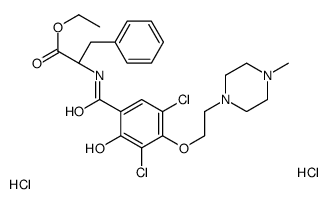| Description |
JTE-607, a highly selective inflammatory cytokine synthesis inhibitor, protects from endotoxin shock in mice. JTE-607 inhibits inflammatory cytokine production, including TNF-α, IL-1β, IL-6, IL-8 and IL-10, from LPS-stimulated human PBMCs, with IC50s of 11, 5.9, 8.8, 7.3 and 9.1 nM, respectively[1]. Cleavage and Polyadenylation Specificity Factor 3 (CPSF3) is the target of JTE-607[2].
|
| In Vitro |
JTE-607 inhibits inflammatory cytokine production, including TNF-α, IL-1β, IL-6, IL-8 and IL-10, from LPS-stimulated human PBMCs, with IC50s of 11, 5.9, 8.8, 7.3 and 9.1 nM, respectively. The inhibitory effects of JTE-607 are also seen in mRNA expression of those cytokines[1]. JTE-607 inhibits inflammatory cytokine production from LPS-stimulated human PBMCs with an IC50 of approximately 10 nM[1]. JTE607 inhibits LPS-stimulated IL-8 production from monkey and rabbit PBMCs, and TNF-α production from mouse and rat PBMCs with IC50s of 59, 780, 1600 and 19000 nM, respectively[1]. JTE607 also suppresses other cytokines, granulocyte-macrophage colony stimulating factor and IL-1RA with IC50s of 2.4±0.8 and 5.4±0.4 nM, respectively[1]. JTE-607 inhibits cytokine production in monkey, rabbit, mouse and rat with IC50s of 59±26, 780±120, 1600±650 and 19000±3200 nM, respectively[1]. RT-PCR[1] Cell Line: human peripheral blood mononuclear cells (PBMCs) Concentration: 100 nM Incubation Time: 20 hours Result: Reduced the increase in the level of mRNAs of TNF-α, IL-1b, IL-6 and IL-8.
|
